Besides climate & spacing factors what are prevalent design mistakes?
Conifer garden design mistakes that is. That either you see others doing a lot or you yourself did before you knew better. I'm curious.
Comments (96)
dcsteg
7 years agoI didn't know I was breaking any rules. Not a big deal. I design and plant what is pleasing to my eye. Embrothium is having his say so which as how it should be on a public forum. I personally would like to see what he is growing in his garden. Maybe I can learn a few things from a color and design specialist as I am self trained. The fence is necessary otherwise I have no protection. I want this place to breath and not walled in like a fort with a green curtain. I think only one other negative comment about the fence has been posted here in the 14 years on the forum. To be truthful I never see it unless going in and out. My only fence hanger, this is an experiment, is Cedrus atlantica 'Aurea Robusta'. So far very happy. Last years photo and has put on another foot since then.
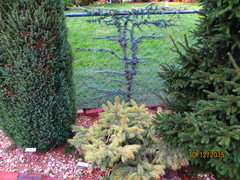
Related Professionals
Norfolk Landscape Architects & Landscape Designers · Baltimore Landscape Architects & Landscape Designers · Athens Landscape Contractors · Columbine Landscape Contractors · Corona Landscape Contractors · Holland Landscape Contractors · Lynn Landscape Contractors · Plainview Landscape Contractors · Pleasant Hill Landscape Contractors · Richmond Landscape Contractors · Wallingford Landscape Contractors · Washington Landscape Contractors · Waterford Landscape Contractors · Yuba City Landscape Contractors · Forest Hill Landscape ContractorsMike McGarvey
7 years agolast modified: 7 years agoDave, you neighbor's yards look nice and respectable so your need for blocking a bad view is considerably less than most. As for privacy, you don't have a pool and I doubt you're running around gardening in the buff. Also, not having a wall of green enables you as a collector to have a lot more collectable plants than otherwise.
Your garden should be viewed, not hidden.
riverwoodgardens
7 years agoBottom line for me is to look at gardens that engage and inspire you. When done right, I can simply feel my soul take wing and lift in flight. There are several gardens that I follow and look to for inspiration in my own gardens. Not to single anyone out, but Dave's is right up there on that list for me.
dcsteg
7 years agoMy garden sets down in a swale. Not really recognizable in the photos. The wind pushing through this garden instead of over and around it keeps it much healthier in the summer months.
In addition the blocking north row of Juniperus v. 'Canaerti' keeps me in Z.6 in the winter affording protection from those blistering cold winds. That benefit alone is why I can grow a lot of out of zone cultivars successfully.whaas_5a
7 years agoExcellent thread and I'm taking notes!
your garden is supposed to be a stress reducer ... not piss you off ....
Ideally, one should approach a conifer garden with same considerations as one does with any other garden design, with one or two specimen plants for each planting area/bed surrounded and complimented with 'second stringers'. But that is often a hard concept to reconcile with a collector's garden!
I do agree with Embothrium that groundcovers are a great unifying factor that helps bring disjointed plantings together. From the gardens I've seen, groundcovers should be used more to make a more complete picture.
All of those are design considerations, the first two being more secondary in the design hierarchy. Adding deciduous plant material or even broadleaved evergreens to the mix IS an important design consideration as you need a textural contrast to really get individual plants to 'speak' :-) Conifers tend to be very uniform in their textural presentation, which is why a conifer-only planting causes one's eye to jump around - there is nothing to focus on. Broadleaved plants, either deciduous or evergreen, or other texturally distinct plants are helpful to lead the eye and focus on the contrast.
Lack of repetition. Repetition can be achieved in a number of ways, and it's a real challenge for 'collectors' who are always trying to cram one of everything into a garden, no matter the size. If you can't achieve repetition by multiple individuals of the same cultivar, then try for repetition of shapes, textures or colors. I've seen many gardens loaded with plant material that defy all of the rules and are pleasing to the eye, and more importantly (to me) reflect the gardener's personality and tastes.
Being both a plant collector and a professional designer, it is a dichotomy I continue to strive to reconcile in my own garden. One thing that helped me to define my own situation better was the book Design in the Plant Collector's Garden: From Chaos to Beauty, by Roger Turner. btw, that subtitle - 'from chaos to beauty' - sums up the situation very nicely :-))
2.) Not planting trees with differing growth rates, life expectancies and degrees of shade tolerance. Lots of people plant lots of fast growing, shade intolerant trees close together...and they crowd each other and block sun. This works better if you mix in some slow growing, shade tolerant understory plants like you would find mixed in most forests.
The shape of the lawn is something that I harp on frequently. Most people start out with a lawn that goes all the way to the property lines, front back and sides. then they cut out flower beds with the result that they look like cutouts and the lawn shape ends up looking haphazard. The landscape is vastly improved if the lawn has a look of fluidity.... as if it were water. the lawn shape should be designed first and what's left over is the planting beds. Where there are good views the lawn can come closer to the property line and where you want privacy or it's a bad view, make more room for plants that will block the view by having the lawn further from the fence.
All gardener's gardens evolve. Most start out with flowers. "I want some color". Then it goes slowly in to shrubs and then trees. That's backwards. You surely wouldn't start off designing in that order, but that's the way it happens more often than not. Basics come first. Build the cake first, then add frosting, not the other way around.
This is personal preference but since I like keeping my conifers natural green and do not like making excessive color in a conifer garden, like mixing aurea foliaged ones with blue foliaged ones(colorado blue spruce for ex.), I will say that trying to make a colorful conifer garden is a mistake. I think perennials(colorful flowers) could be accomplishing that role better. I personally just think conifers should just stay the natural green they are.
Every opera needs not only a diva but an ingenue, a villain, supporting cast and a chorus. I sometimes think of my garden that way. Too many divas without enough supporting cast just doesn't work. By the same token, no diva isn't good either. The oddballs generally do best when given choral support!
.....with the lawn or negative spaces, the stage and viewing area.
A good balance within a specific defined area is a little yellow, some blue and a lot of green. The yellow conifer is the highlight, the beacon, the diva, flanked by blue ones for a cooling note and contrast (cool versus warm), with the bulk of the scene fleshed out by green kinds so that the scheme does not become a circus.
tsugajunkie z5 SE WI ♱
7 years agoI'd have to agree with much of what you said, whaas, with the exception of, "Conifers tend to be very uniform in their textural presentation, which
is why a conifer-only planting causes one's eye to jump around - there
is nothing to focus on." Needle shape and length along with branching structure can give varying textures and color could easily offer a focal point for the eye. Not that I could be without the deciduous plants, mind you.A terrible pic for lighting, but you see the varying textures of just the conifers.
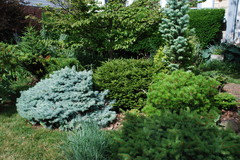
tj
Mike McGarvey
7 years agoKnowing what's appropriate in placing a plant in an existing landscape is important in maintaining the existing design in a garden. You wouldn't want to place a tall, large broad leaved evergreen in a sub-alpine composition or a mini conifer in a jungle environment. It happens all the time when one is looking for space.
Ontario_Canada5a_USDA4b
7 years ago"Can
we agree that a few of the odder pendulas can become major distractions if not
placed very carefully?"I agree wholeheartedly, I don't want to be nearby alone at night ... they look like giant witches to me ...
Excellent thread!
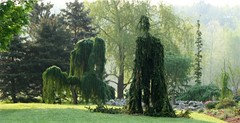
Ontario_Canada5a_USDA4b
7 years agoYeah, I sometimes wonder why people breed those bizarre plants, it can't be all breeding accidents, some people like them!
whaas_5a
7 years agoI cheated and quoted all the experts, lol.
I took that comment a bit differently in that conifers do have such a varying degree of colors, forms and textures and in that sense your eyes go crazy and don't know where to go. Just need that unifying touch to bring it all together.
I have this raging battle inside...one is this collector that wants it all and the other wants a cohesive design. This is the reason I'm on a quest to work with someone to find this balance.
But with that said I embrace all gardens and those who have a passion for plants. I also greatly respect those who understand design and don't force those views on others with different mindsets.
gardengal48 (PNW Z8/9)
7 years agoIn the somewhat esoteric world of landscape/garden design, conifers are pretty much considered to have a very similar texture regardless of type or shape or form (the last two being design elements on their own). The textural qualities of various plants are typically broken down into 3 descriptors: fine, medium, and coarse (or bold). 'Fine' is usually reserved for very delicate, almost lacy plants, like many ferns, baby's breath, gaura, nandina, most ornamental grasses, etc. Coarse or bold textured plants are those with big leaves - hostas, gunnera, rhododendrons, etc. The 'mediums' are all the rest and conifers are typically grouped in this category.
There are exceptions to this - there are exceptions to every tenet of landscape design - but for the most part, this is how they are grouped and considered by a designer. Up close and personal, many conifers do have rather lacy, delicate foliage but it is important to remember that landscape design is something perceived from a distance - texture in garden design is not a tactile quality but a visual one and the foliar density of most conifers and their relatively uniform textural qualities when viewed from a distance makes a conifer-only planting texturally very similar and often crying out for contrast.
All this chatter about design principles and elements that may be lacking in a conifer garden were prompted directly by the OP's specific request: 'what are the prevalent design mistakes'. Not everyone is inclined to follow these principles to the letter nor should they. Gardens are very personal spaces and should be planned, developed or evolve according the gardener's wishes. If they are satisfying a need - displaying a collection - that's all that is important. But are they necessarily considered to be well-designed? Probably not :-) As mentioned before several times, it is very difficult and an ongoing challenge to successfully wed a collector's garden with that of "good" garden design. That does not diminish the value and satisfaction of a well tended collection regardless of adherence to design principles.
Mike McGarvey
7 years agoAs a garden grows and a gardener's knowledge grows, so too should the concept of garden design grow. My idea of what garden design forty years ago is a lot different than it is now. Nature has constant way of teaching and it's all about change. It all evolves. The first thing that happens to a plan is change. I learned how to just start with generalities and work down from there.
dcsteg
7 years agolast modified: 7 years agoThis thread, although interesting, is beginning to read like some books I know. Shall we move on? We all know individually where we want to go and do with our gardens. As stated before each individual creates what is beautiful to their own liking. Satisfaction and relaxing in your accomplishments is what counts. Do not tell the other person what's wrong with their conifer design/plantings unless they ask for your opinion. If you are bold enough to do that show us some photos of your garden so we can see first hand if you know what you are talking about. I find that most of the time they will not present their garden accomplishments to us when asked numerous times to do that.
gardengal48 (PNW Z8/9)
7 years agoBoy, I'm not sure why folks are getting so defensive about things!! The OP asked a rather specific question, which I think has been addressed. That it generated some other clarification is understandable........most threads do.
No one is saying what you should or shouldn't do in your own garden - that is always your choice - and this thread in no way implies that you should be doing anything differently. It was just a response to a very specific question about garden design.
btw, I don't share photos of my own garden because I no longer have a 'real' garden to share - after selling my house and garden a dozen years ago, I now rent and garden primarily in containers. But I am a professional, degreed/certfied landscape designer and do feel qualified to answer specific design question like those the OP presented. Whether anyone is inclined to follow any of these design precepts is entirely up to them but those who do deserve no more criticism than those who do not.
Ontario_Canada5a_USDA4b
7 years agoThere
may be a difference between a private 'do what you want' backyard, and a
semi-public front yard for which this thread is quite educational.whaas_5a
7 years agolast modified: 7 years agoLooks like posts have disappeared! lol
Not sure if this was mentioned yet but selecting superior cultivars and avoiding mono cultures is something to consider as well. I still see designers selecting older inferior cultivars when better more impactful cultivars are available.
This is more of a short term consideration but I believe it makes sense to start with plants of varying age. In particular start small with the faster growing plants and go slightly larger for slower growing plants and your core specimens.
You may not end up with such big gaps between the plants in the early phases.
Todd C
7 years agoSome things that I see, others have mentioned some of these. the collector thing- guy a few blocks away loves agaves apparently. his whole yard is rocks and agave and a couple yuccas. very few people want an all agave yard. scale is a big thing I took this picture in Denver look how big the spruce is (I think it's a blue spruce) next to the house. some trees are better in parks. blue spruce. Himalayan cedar come to mind, unless you're talking about slow growing or dwarfs. if you have two or three acres you can plant one or two monsters but not on a regular modern quarter acre lot.
another thing is having one of everything. I was guilty of this at one time. my garden out front was just a collection of individual unusual things I liked. it never came together.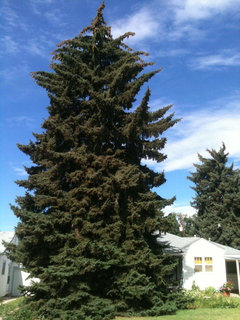
Todd C
7 years agoI'll add that the few oddball collector type items in my yard (that the next owner would likely remove and not appreciate) would be collected in advance of me selling the place and replaced with something more prosaic. some things which look a little odd to some are a treasure to those few in the know.
wisconsitom
7 years agoI was going to comment on the "plant collector" yards but I see this has been addressed well. It is the most common problem I see-no repetition, no overall concept, just plants that somebody saw and bought and then found a place in the yard for. That's not landscaping.
Embothrium
7 years agolast modified: 7 years agoHouse isn't paired well with that nice spruce at all. Some day somebody is going to spoil or remove the spruce because of this - same as on the Trees Forum thread about the Norway Spruce that got skinned because it was right in front of a house of insufficient size and grandeur.
User
7 years agoI think that a landscaping is intended for x number of years and after that needs to be re-done or at the least a major overhaul. Not everyone thinks this way and by the time trees need to be removed, the owners have either lost interest or don't want the expense or maybe both. There sure are a lot of properties around here with over grown large tree specimens, placed less than 10', towering over a single story house.
riverwoodgardens
7 years agoPart of this goes back to spacing issues, and part of this problem, Bill, is that many fail to do their homework. That 'cute little spruce' or 'sweet little JM' is going to GROW! It is not going to magically stop growing when it reaches the perfect size for where it is placed in the design, it is not going to stay at the size it was when it was planted, and many unfortunately, design and plant for the way (and size) a plant looks or is now, rather than say, 10 yrs down the road. Many, in ignorance, see for example a 'Baby Blue' spruce, and focus either on the 'Baby' part of the name, or the size it currently is, and think that it must stay small therefore, without realizing that same 'Baby Blue' is going to not just grow to more than 20', it will do so in a much shorter time period than they may think.
User
7 years agoAnd I suppose at the time it seemed like a good idea to place the new tree right next to the front door so visitors would be sure to see it.
Many of these places have a front yard that's barely makes 30'x40' so maybe a better choice in type of tree would've helped.
riverwoodgardens
7 years agoExactly. If they would do their homework first, research every aspect of what they are planning to plant, they would then know if it would suit the area for climate, soil/light conditions, and future or ultimate size. I believe Dave mentioned this way back up there on this thread.
dcsteg
7 years agolast modified: 7 years agoThis should give some of you something to talk about. Right or wrong.
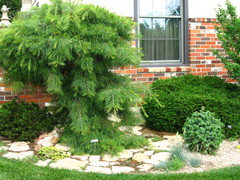
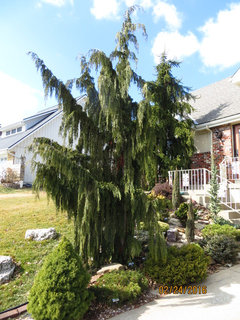
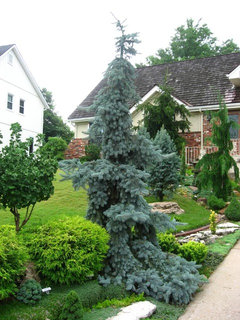
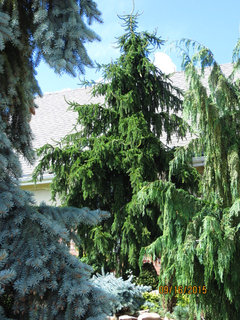
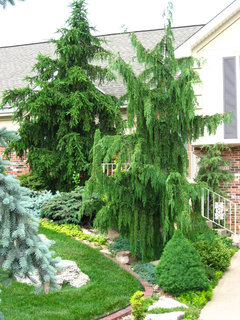
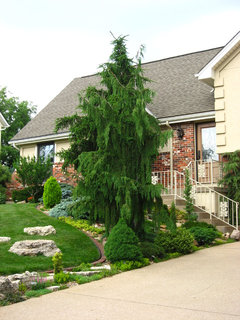
Mike McGarvey
7 years agoThose trees are going to be too large in not too many years, but as you have said, you planned on it. I have done the same and after looking good for 40 years, they have now outgrown their location and it's time I removed a few. You have a few more years and they will be looking even better about the time you sell. :-)
dcsteg
7 years agoRight Mike. They have done well staying away from the side of the house, not enough sun, and the driveway also. The Cupressus n. 'Pendula' was sold to me as 'Strict Weeper'. A common occurrence these days. When small they are hard to tell apart and all look the same.
sam_md
7 years agoTodd C gave us a great example of large Blue Spruce in Denver. This is what I was talking about in my earlier post. That tree is gobbling up that house. If one could do it over again, how exactly would you place that spruce? For a residential lot I'd say, find something else.
sam_md
7 years agoRow of DAS beside local supermarket. Normally I don't like straight rows which are boring and show lack of imagination. In this case I'll take DAS any day over winged euonymus or forsythia, the classic "one trick pony".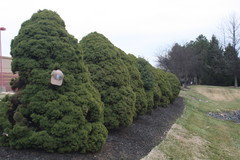
riverwoodgardens
7 years agoDave, love your 3rd photo down from this morning's post. That 'The Blues' is stunning! Can't wait till some of my landscaping has a chance to grow up a bit.
whaas_5a
7 years agolast modified: 7 years agoTom, I don't think a collector's garden is supposed to have repetition. The overall concept is just that, its supposed to be a collector's garden where you find a plant you like and you find a place for it. Its not a problem in their eyes as that is the actual intent.
Although its evident that some collector gardens are thoughtfully planned for.
I know folks harp on planting something that will outgrow its space, and for good reason. Personally I want a succession plan where I can enjoy many different types of plants. If one fails, oh well, another can take over. If they both thrive then I have to chose my favorite down the line. I'm not going to assume I get to watch the plants grow for many decades. Too many people around me have passed away at a young age so I just tend to live for today vs tomorrow....at least every other day!
dcsteg
7 years agolast modified: 7 years agoWell said whaas. My thoughts and concept that I have used for years in my ever changing garden.
wisconsitom
7 years agoI guess it comes down to each one of us' definition of "design", as in the title of this thread. To me-this is merely opinion-that word takes us into a different realm than that of the plant collection. Flow, shape, sequence, and a bunch of other words come into play in design, whereas by your own description whaas, you are placing a plant where it will fit and grow. I only bring this up because again, the subject here is design of landscape, and collector's gardens are, IMO, built around a totally different concept, equally valid, but outside of what this thread is about. So within that context, I continue to view those who would be designing a garden but who instead end up with a collection of plants to have missed the mark. For the collector who is purposely creating a collection, that is a different thing than garden or landscape design. Again, my opinion.
whaas_5a
7 years agoAll good and I'd say most, including myself, would agree.
You had mentioned that collector gardens don't have a concept so I wanted to share my take. But I'm likely mincing words here!
I wouldn't doubt with trial and error along with the desire to improve the aesthetic, if some of the worst looking (relatively speaking here) collector gardens at some point turn into the best looking gardens out there. They tend to be invigorating, full of life with surprises around each corner. If you go by the book only, you can end up with one stale cookie!
Mike McGarvey
7 years agoUnderstanding scale is part of 'The Book' and that's where a lot DIY gardeners and collectors lose it. That, and flow.
I'm sort of a collector, but I'm more of a garden designer and have to constantly avoid the tendency to have a spotty look, with not only different varieties of plants, but equal spacing as well. Those are my two biggest battles.
Conifer K(7b GA)
Original Author7 years agoWhen I started the thread I was thinking more in terms of broad-based appeal. That is, if one is looking to create a universally appealing conifer garden... what common mistakes should we avoid? I think most of us on here, should and do, factor in both future re-sell value and our neighbors judgements when designing. Those who don't, or those who live in the middle of nowhere-- I think we can all agree; should devise and design to their hearts content.
whaas_5a
7 years agoMy neighbors thought I had a problem and I broke all the design rules with more design mistakes than one can count. I was told by realtor I really screwed myself.
Sold for more and offer was in within 36 hours so I wouldn't let that be the driving force. Maybe I was just lucky!
gardengal48 (PNW Z8/9)
7 years agoConifer Kid, you sent me a Houzz message but I am unable to reply (do you have your messaging button enabled??) You can either try again after setting that to enable or contact me directly at grdngal48@hotmail.com.
Todd C
7 years agoSince it's Christmas time let me point out that where I live the living Christmas trees people tend to buy and plant in their yard here in texas are Italian stone pine, aleppo pine, deodar cedar and Norfolk island pine. The last is not hardy here. It might make it through a few mild years. I've seen several converted oversized house plants The first two pines get much bigger than expected and many are surprised that 1 they look a little ugly growing our of that juvenile foliage and 2 they get big fast and do not look like Christmas trees. Deodar cedar likewise gets far to big. My supposedly semi dwarf cream puff was growing 9 inches or more a year. And a liner sized plant was as tall as me in 9 years .... until I killed it shoving it in a bonsai pot :(
User
7 years agoTrying to grow conifers in wetlands is my problem. Im probably the only person here who routinely digs up leeches and mole salamanders when planting conifers.
Ontario_Canada5a_USDA4b
7 years agoI searched for "designing with conifers" in houzz Stories, the vast majority of the sample designs shown in the photos are way too dense for my taste.
dcsteg
7 years agolast modified: 7 years agoYou need to design your own garden, forget houzz. With your high expectations on what is acceptable to you its the only way to go. To began with lay it out on paper with pencil and eraser...you will make many changes. Either 1/4-1/2 inch to foot scale. Start with your house as focal point then build your design around it. Put it on paper and post it here and let us see what you are trying to achieve. I have no idea if you are dealing with acreage or a 100/150 plot of ground. With that done you can build your conifers and companion plants into it. To find the right plants it could take years to complete. You need to hook up with a grower /nursery man. Get to know him very well. Then in time you can piggy back your order to his spring time order and maybe get a discount once he knows your serious. It took me 15 years to accomplish what I have now. I did the design work and hauled everything home in my truck and planted it, rocks and all. If you pay retail and have the work done it will break the bank. Put your thinking cap on and develop a strong back. You will need both. What I have said here covers very little of the big picture. You will find out soon enough. Merry Christmas and a Happy New Year.
Ontario_Canada5a_USDA4b
7 years agolast modified: 7 years agoThank you so much, I
have re-designed my front yard before I became active here (1 big and 2 small
trees removed, 2 dwarf conifers planted, hardscaping with stone and parts of
the wood of the removed trees, etc.) Looking back, I would not do anything different
in the front yard (although there are some minor technical uncertainties that
keep nagging inside me.) I will be cultivating a very small part of my
naturalized backyard next spring."To find the
right plants it could take years to complete."That's what I fear,
especially if I become ambitious and try uncommon plants. Fortunately, that little project in the backyard is in part hardscaping that can 'grow' with the plants.Season's Greetings!
Ontario_Canada5a_USDA4b
7 years agolast modified: 7 years agoPerhaps I should say that some houzz landscapers appear to create exciting, postcard-like designs. Whereas I want my front and backyards to be relaxing, which requires a much less dense planting scheme.
lcadem78
7 years agoOP, one approach is to just look at gardens YOU like, analyze what they did and with what plants and try to replicate it in your own way. You'll make mistakes and you'll fix them but you'll always know that you are trying to achieve something you really like. Playing it safe (e.g. like planting a Tombstone Garden) might end up being not satisfying in the long run because you ended up not creating what you really wanted. The only danger is to not realize that certain type of landscaping are made possible through outrageous amounts of maintenance and work (and money). So, talk to the owners and try to guess if the amount of work they put in there is something you are comfortable with. If you are uncomfortable with garden maintenance, just look at some british gardens. They are pros at doing stunning gardens that, although not manicured, are (arguably, of course) as good or better than any other.

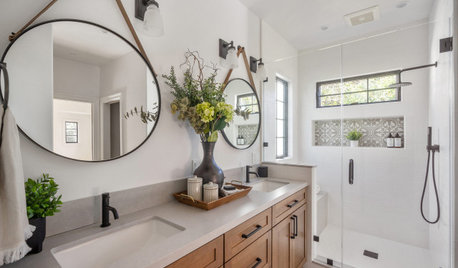
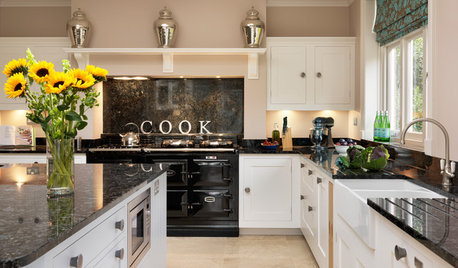
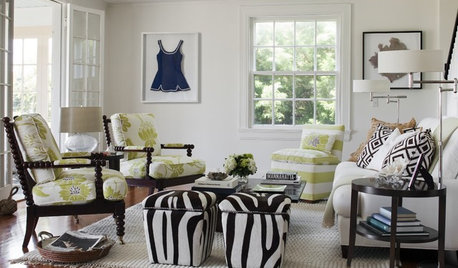
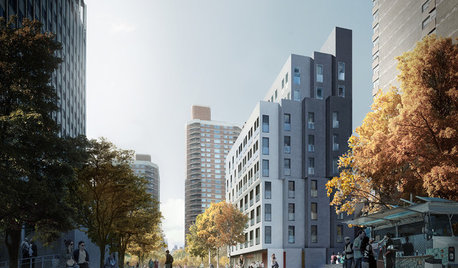

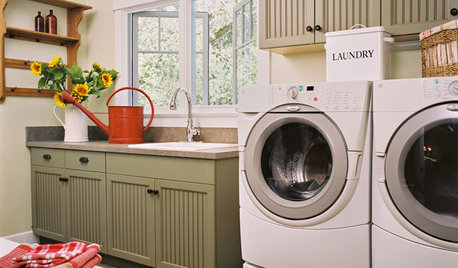
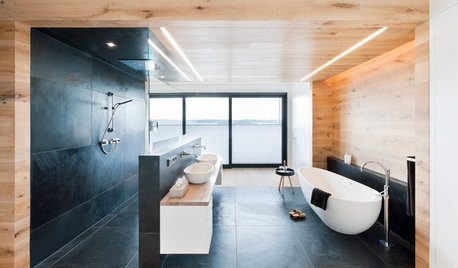
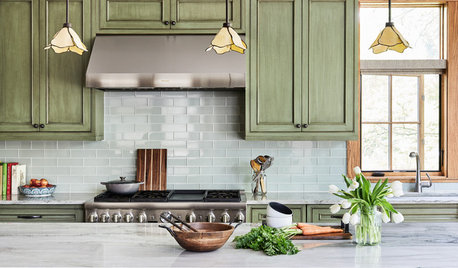
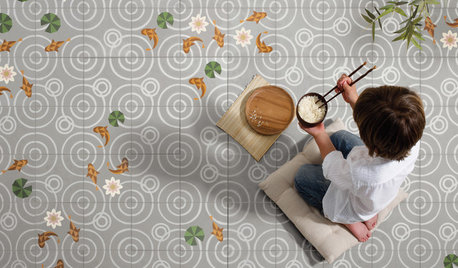










dcsteg